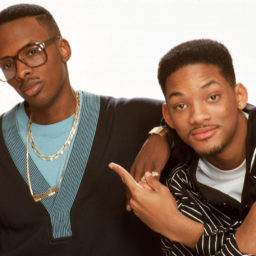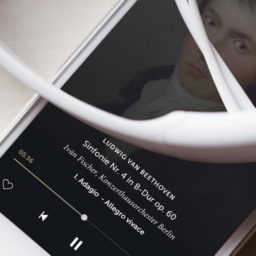The emphasis of playlist strategy is usually placed on how artists can get their music on popular curated playlists. Let’s discuss the long-term value of artists stepping into the curator role themselves.
In the context of this article, when referring to playlist strategy, I mean playlists that you create.
For most of the readers of this article, the two most important places for developing a cohesive playlist strategy are YouTube and Spotify (and maybe Soundcloud). They’re the places with the highest amount of traffic and search queries.
Objectives
You’re going to be using your playlists to achieve 3 things:
- To get discovered by (potential) new fans;
- To establish a habit for fans that keeps them connected to you;
- To create regular engaging content for your socials to help you stay top of mind for fans.
Discovery. Habit. Top of mind.
Building your playlists
Let’s address objective 1 first: getting your music discovered. This is the main concern for most artists. Before anything, your music has to be good. If people are not sharing your music, it’s probably not that great. This needs to be your #1 concern and priority. If people are not sharing your music, go work on your sound instead of marketing something that people don’t care about.
Keep reading if you’re actually at a level where your music gets traffic through friend recommendations.
You’re ready to get your music discovered.
Variety
Take a couple of your best tracks. For each of these tracks, create a playlist. Add tracks from similar artists, artists that inspire you, anything that is somehow logically related to your music.
Understand that a lot of users will start playing your playlist and then switch to background listening. The logical relation has to be there, even when people are focusing on a different tab in their browser, or have moved on to another activity away from the computer.
For the music you select, the most important criterium is that it has to be music that people actually search for.
People will type search queries, and you need to create the best chance that they will land on your playlist. Think carefully the first few times you make these playlists. Over time, you’ll find the best way to do it and the amount of effort required will decrease.
Do not place your track at the top. People need somewhat familiar content to get into a playlist. Place it somewhere in the middle.
Remember the listener’s perspective: this is not about your music — this is about their experience. If you provide them with a good experience, they’ll listen to your music. If you don’t, they won’t. Simple.
Consistency & regularity
You’re going to pick a day of the week and every week you’re going to update your playlist on that day. If your playlists delight your listeners, they’ll check back every week on that day (that’s why Spotify’s Discover Weekly feature is so important to them).
This means you let people create a habit around your playlists. And while all other content of the playlists might change every week, you’ll have at least one of your tracks in there. So, the habit implies that returning listeners will listen to you every week.
It’s an elegant way to make sure fans don’t miss out on new music through their cluttered Facebook and Twitter feeds and inboxes.
Bi-weekly is also ok. Monthly is a maybe. Anything irregular is a big no. Either you execute this strategy, or you don’t. This particular strategy only works when applied consistently and with fixed regularity.
YouTube vs Spotify
YouTube and Spotify require their own approaches. They’re very different services, that drive very different types of music listening behaviours, bookmarking, etc.
For YouTube, I’d focus on making an ever-growing set of playlists from your main channel where you also post your music videos. It might net you subscribers, too.
This means every YouTube playlist becomes a finished product. Keep them short: roughly 10 tracks. Every week, you’ll create a new playlist with new content, and one of your tracks in there. Share it on your socials: some nice new content for fans.
For Spotify, you’re going to do something different. They’ve actually demoted user-generated playlists in search results, so it’s a bit harder to get found now. So, instead, you’re going to turn it into a tool to connect with your fans and familiarize them with your music taste.
Your Spotify playlists should be longer. 30 tracks or more. Think of them more as radio stations that are refreshed every week. Your followers check in, tune into the new content and also reconnect to your music (like the Diplo & Friends playlist).
User stories
I want to explain a concept from product management called ‘user stories’ — they’re used to describe certain things people expect from or want to be able to do with a product or service. They’re a useful way to not lose sight of what’s important to the people you’re making something for. What’s important to you, is not always what’s important to your target audience.
For your fans
Let’s think from the perspective of fans. And let’s define fan as someone who has shared your music with someone else. Facebook likes don’t count. We’re talking about the people who care enough about your music to share it with others.
Let’s think of some of the reasons why they might be interested in your playlist:
- “I want to learn more about the music that inspires this artist.”
- “I’ve already heard everything by this artist, but I want more!”
- “I wonder what other music this DJ / producer plays besides his own tracks.”
As people get more familiar with your playlists, they may start to develop some more specific expectations, such as “I want to know about the freshest new releases this artist curates” or “I just need some great party music” and they associate your playlists with that.
Focus on the bullet pointed user stories first. You need to get people in, and then get them to form a habit. There are a lot of people creating good playlists for more specific purposes, but the advantage of the bullet pointed items is that they’re all focused on you — and nobody does you like you.
For people who don’t know you
This gets more tricky, because there are so many reasons why someone might land on your playlist. Think about what kind of music you’re curating. What are people trying to achieve when they’re searching for that type of music? A lot of them are going to land on your playlist by looking for an artist other than you, Four Tet for example.
- “I want to listen to Four Tet.”
- Yup – some people will just click the first playlist they see if it includes Four Tet and they spot the cover art.
- “I want to listen to music like Four Tet.”
- “I just want to put on some chill out music and not think about it.”
- “I want to listen to a playlist that includes music like Four Tet.”
- “I’m curious about discovering more music like Four Tet.”
Although similar, these are different motivations that correspond with different behaviour types. It also means people will judge the quality of your playlist differently (quality is defined as to whether it scratches the person’s itch).
Long term effects
If you do well, your music might actually become associated with the other acts you include in your playlists. This means algorithms will add it to the ‘play next’ queue on YouTube, to ‘similar artists’ on Spotify, or even have you appear in the Discover Weekly of people who listen to a lot of music like that.
Your playlist may become a brand on its own: something artists try to get their music featured in. This means you’re able to shine a light on great artists you feel are not getting enough recognition. Then there will be the people who follow you on playlists, but not on other socials. These may be actual fans (people who share your music) or just people who are into the music you curate.
Playlists are a social medium in their own right. Treat them like that.







